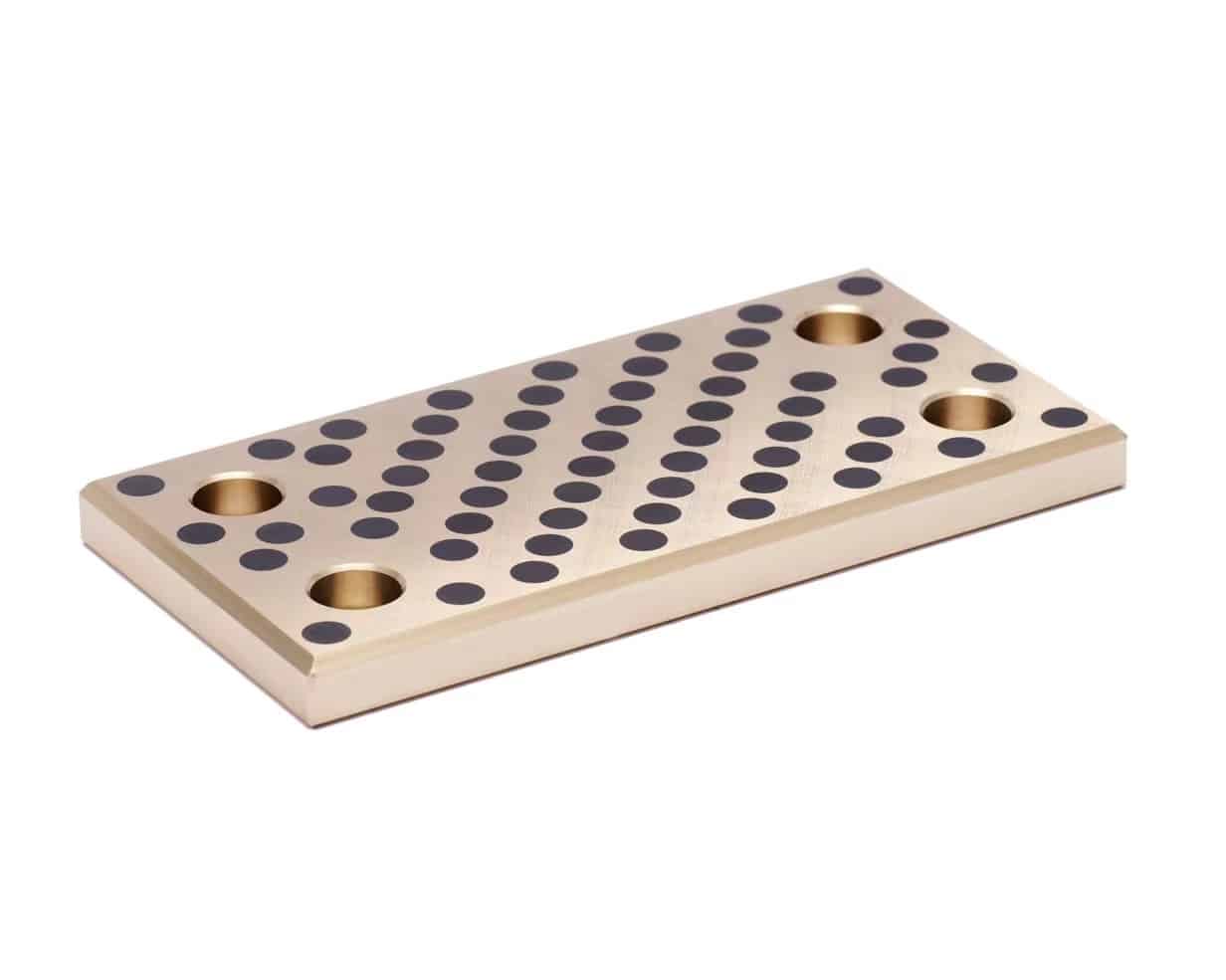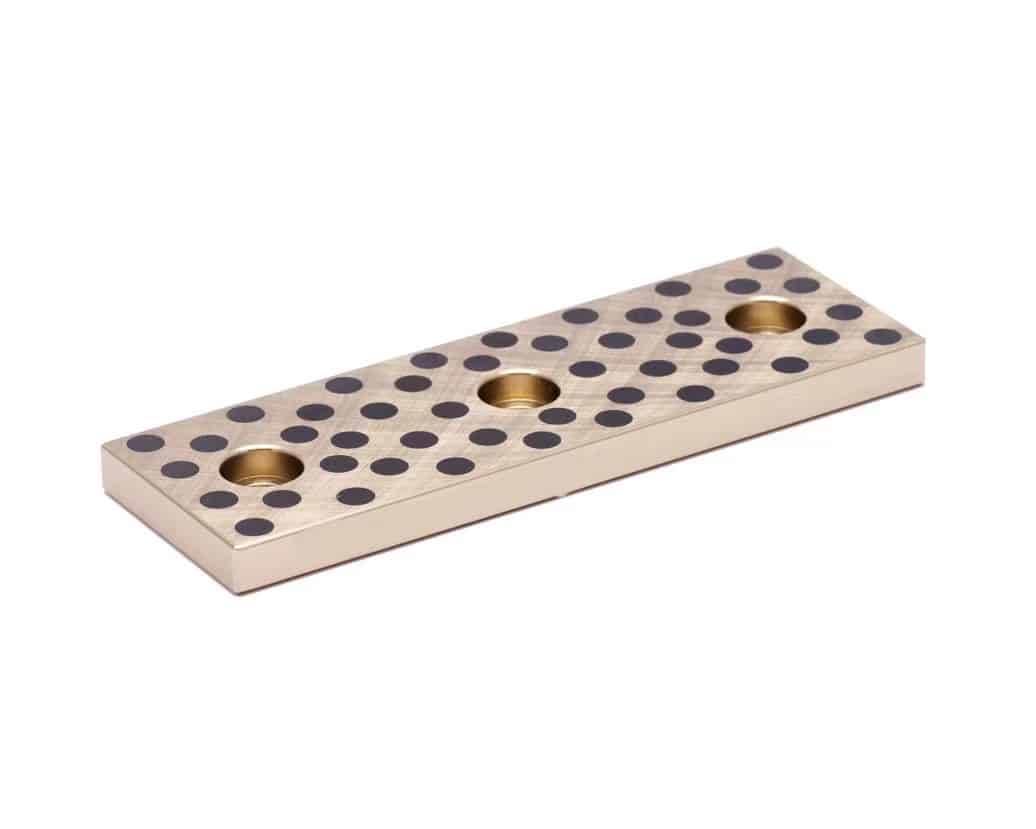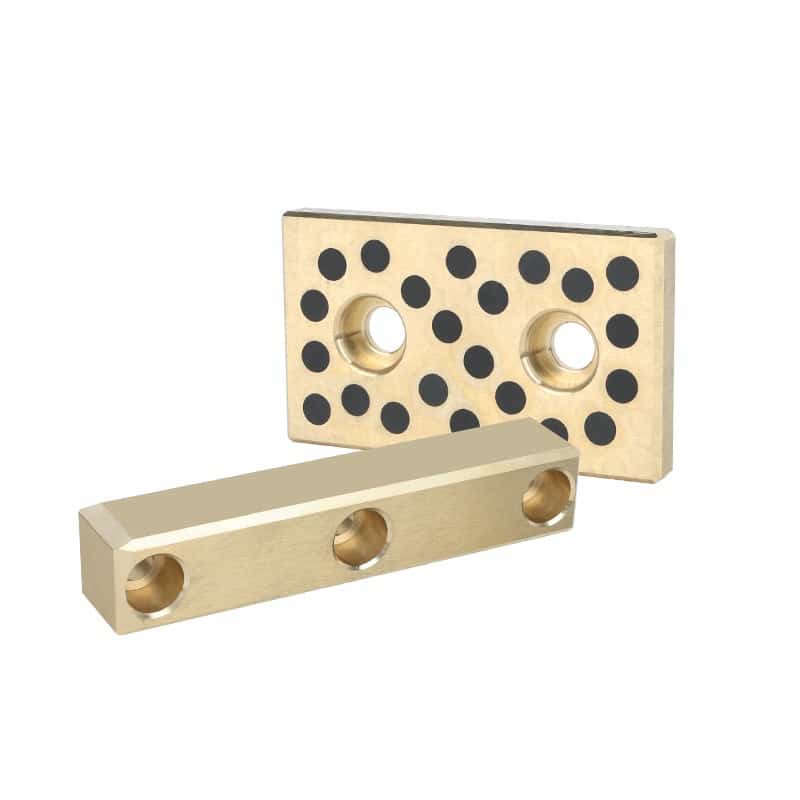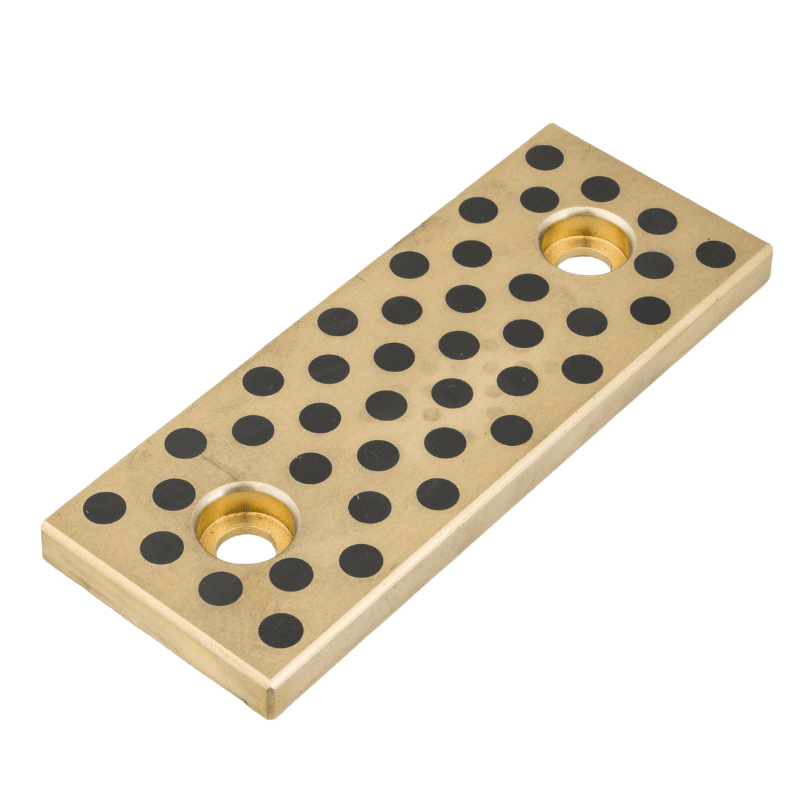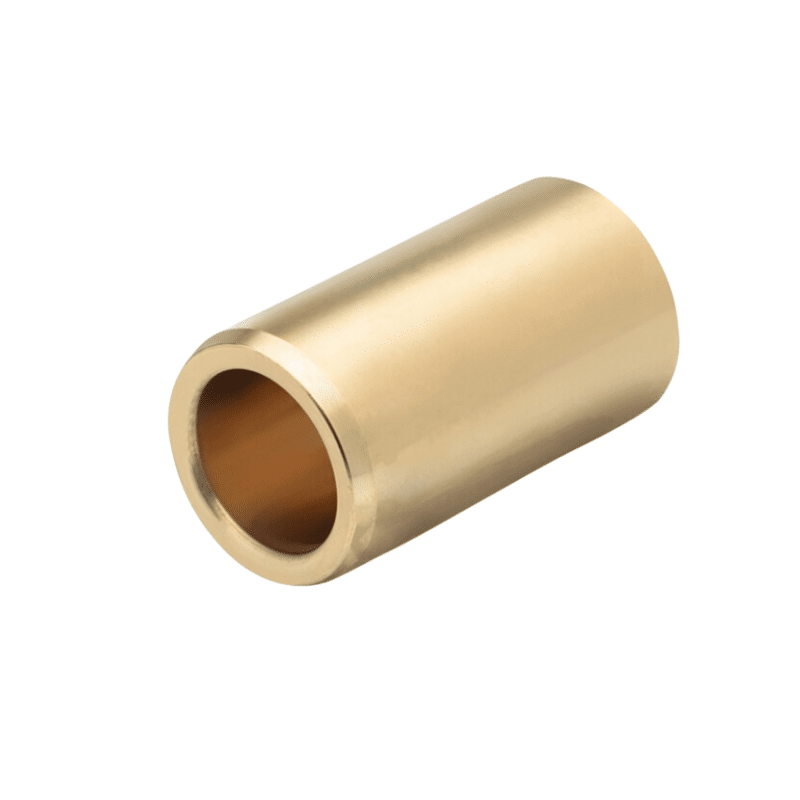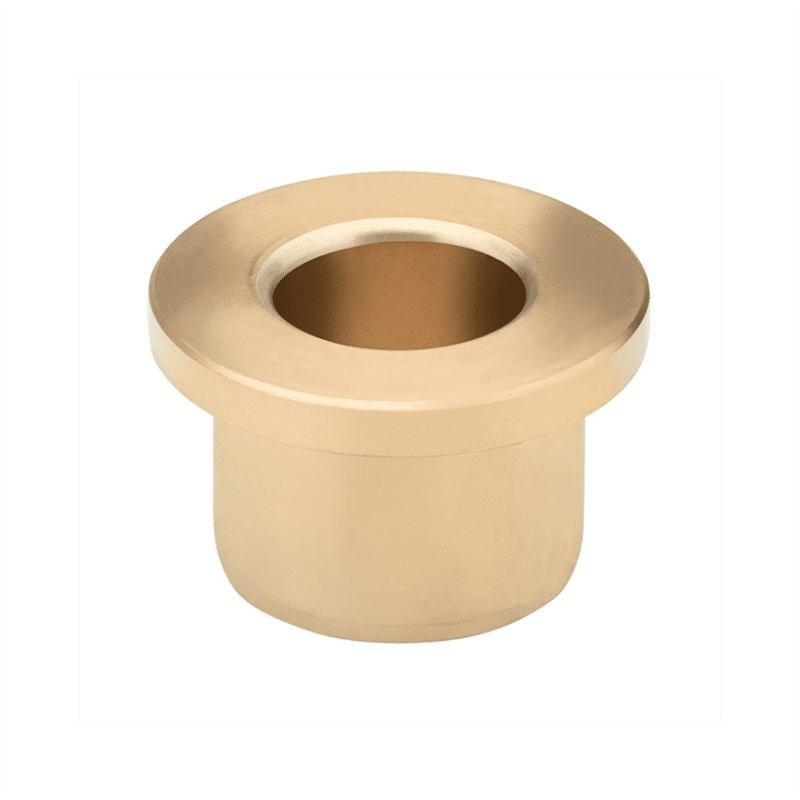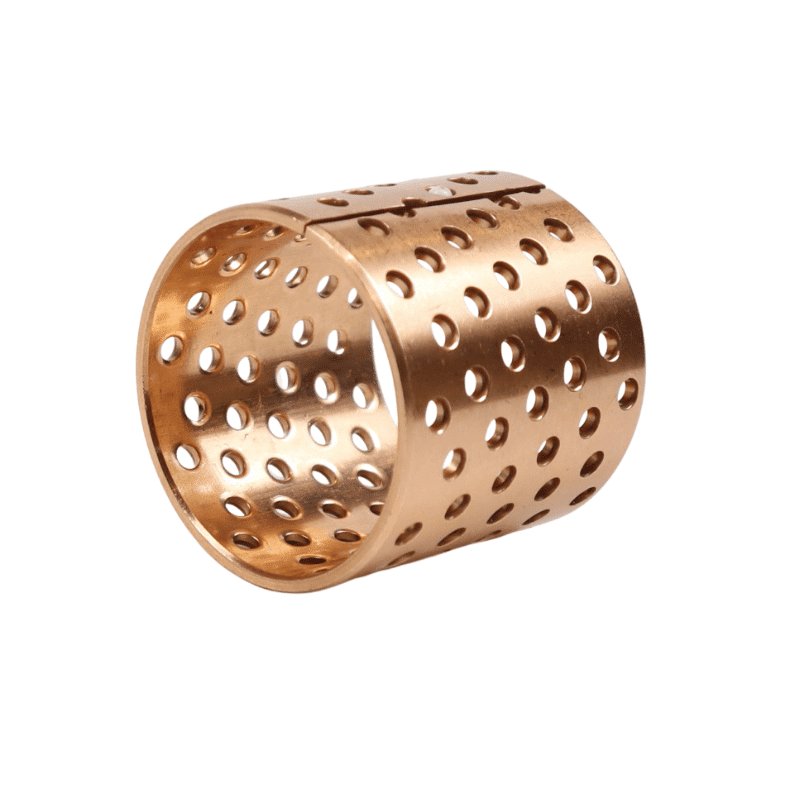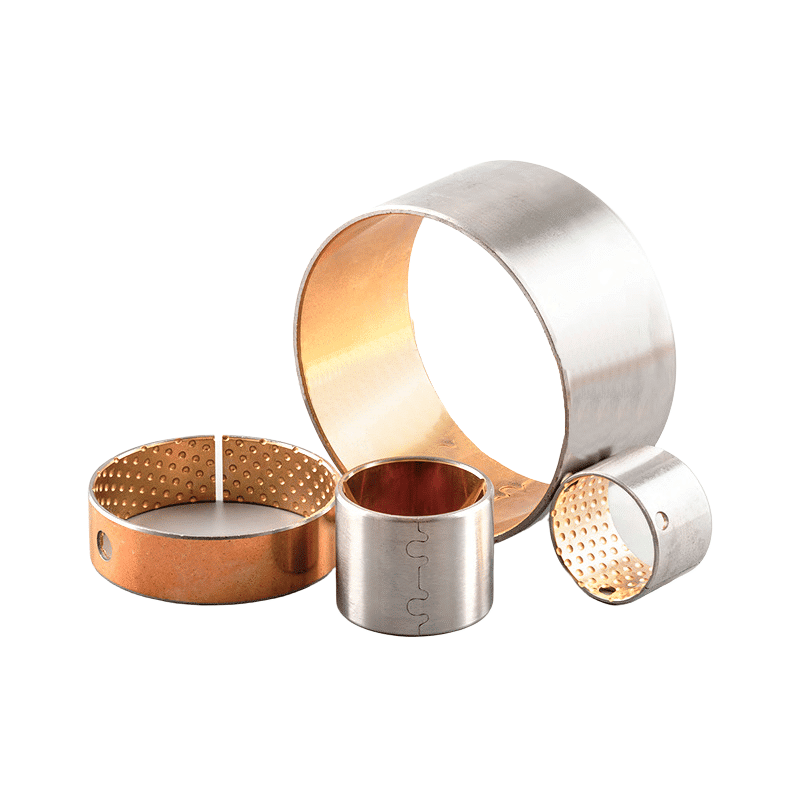Slide Plates Bearing Plates
Slide Plates Bearing Plates
Say goodbye to the hassle of frequent lubrication maintenance. Our self-lubricating technology ensures smooth operation and reduces wear and tear, extending the lifespan of your equipment. Experience uninterrupted productivity and cost savings as you bid farewell to the need for messy lubricants and time-consuming upkeep.
Manufacturing on Demand, alternative solutions
Slide Plates Bearing Plates
Slide bearing plate, Selecting the right Bronze Lubricated Wear Plate is critical for the efficient and smooth operation of machinery in high-load applications. By considering the factors listed above, you can ensure that you choose the most suitable wear plate for your specific needs, optimizing performance and extending the life of your equipment.
For expert advice, high-quality products, and customized solutions for your Bronze Lubricated Wear Plate needs, consider contacting viiplus.com . Our team of experts is here to help you select the perfect wear plate that aligns with your application requirements, operational conditions, and budget.
Slide plates, or bearing plates, play a pivotal role as linear bearings in numerous mechanical and structural settings, facilitating movement due to thermal dynamics or other forces. These elements are vital for the seamless functionality and durability of infrastructure such as bridges, pipelines, and edifices, especially in high-temperature scenarios like those found in water-tube boilers. The customization of slide plates in terms of design and materials is aimed at fulfilling the unique demands of their applications, including considerations for load bearing, temperature fluctuations, and environmental impacts.
Varieties in Material and Design
Slide plates come in an array of materials and designs to match a wide range of operational needs:
- Graphite Slide Plates: Designed for high-temperature environments, these plates can endure up to 1,000 degrees Fahrenheit generally, and specific scenarios allow for temperatures up to 3,000 degrees Fahrenheit, with pressure tolerances up to 2000 PSI.
- PTFE, 25% Glass Filled Slide Plates: Best suited for scenarios with low heat and high velocity, these plates are also applicable in high-temperature settings when used alongside other materials. They offer excellent resistance to wear without the necessity for additional surface treatments and remain stable under various weather conditions.
- Bronze Slide Plates with Graphite: These are optimal for scenarios demanding high-load capacity and low velocity, where lubrication with oil or grease is not feasible. Capable of withstanding temperatures up to 1100 degrees Fahrenheit and pressures up to 5000 PSI, they are a robust option for demanding conditions.
Usage and Installation
Employed across diverse applications, slide plates are integral to:
- Managing expansion and contraction in bridges and buildings
- Supporting heavy machinery such as pressure vessels
- Reinforcing structural steel frameworks
- Securing pipelines
The typical installation involves a dual-plate setup, with one plate gliding over the other to accommodate movement. The bottom plate is often welded to a fixed base, while the top plate connects to the moving element, ensuring smooth motion and minimizing friction.
Selection Criteria
Choosing the right slide plate involves several critical considerations:
- Maximum Load: The plate must withstand expected loads without compromise.
- Temperature Range: The chosen plate should be compatible with the operational temperature spectrum.
- Environmental Resilience: The material and design should resist the specific corrosive or adverse conditions it will encounter.
- Movement Adaptability: The design needs to account for the anticipated movement range, including lateral and axial adjustments.
In essence, slide plates are indispensable in a multitude of industrial and structural frameworks, offering a friction-minimizing surface that accommodates controlled expansion and movement. Selecting the appropriate material and design for slide plates is crucial for the system’s reliability and operational efficiency.
Unlocking Efficiency: The Power of Slide Plates & Bearing Plates in High-Load Applications
Slide bearing plate
In the realms of construction, manufacturing, and various other sectors, the need for robust solutions to manage high-load applications is pivotal. Slide plates and bearing plates are unsung heroes in these environments, ensuring machinery and structures operate smoothly and efficiently under immense pressures. In this post, we will delve into the importance of these components, their applications, and how they are revolutionizing industries.
Slide plates, also known as bearing plates, are used in a variety of applications to facilitate the movement of mechanical systems. They consist of two main components: a metal base plate and a low-friction material such as PTFE (polytetrafluoroethylene) or graphite, which provides a surface with a low coefficient of friction. These base plates are used to support piping, heavy equipment, and structural steel components to enable movement of mechanical systems in a cost-effective manner. The choice of low friction surface material and base plate steel depends on the specific requirements of the application, including temperature and load factors. Installation of the skids usually requires welding or mechanical fastening to the supporting metal, and design considerations include compression creep, coefficient of friction, and temperature resistance.
. The choice of slip sheet material (e.g. graphite, PTFE) depends on the specific requirements of the application, including temperature, pressure and velocity conditions.
Low Friction Slide Plates: The Complete Guide to Slide Plates
What are Slide Plates & Bearing Plates?

Slide Plates
Slide plates are designed to mitigate friction between moving parts, allowing for smooth and controlled movement, even under substantial load. They are crucial in machinery where components are in constant motion, ensuring the longevity and efficiency of the equipment.
Bearing Plates
Bearing plates, on the other hand, are employed to distribute loads efficiently across structures, preventing structural damage and ensuring stability. They are fundamental in construction and infrastructure projects, particularly where heavy loads are involved.
Applications in High-Load Scenarios
Construction and Infrastructure
In construction, bearing plates are indispensable, distributing loads from beams to columns and preventing buckling or deformation of structural elements. Slide plates are crucial in construction machinery, reducing wear and tear and ensuring smooth operation.
Manufacturing
In manufacturing environments, both slide and bearing plates are integral. They facilitate the seamless operation of conveyor systems, production lines, and other machinery, minimizing downtime and maintenance requirements.
Heavy Machinery
In heavy machinery like cranes and excavators, these plates enable the movement of massive components, ensuring optimal performance and reducing the risk of mechanical failures.
Benefits of High-Quality Slide & Bearing Plates
- Enhanced Durability Premium materials and precise engineering extend the lifespan of machinery and structural components, reducing the need for replacements and repairs.
- Reduced Friction Slide plates ensure smooth operations by minimizing friction between moving parts, reducing energy consumption and wear.
- Optimized Load Distribution Bearing plates efficiently spread out loads, preventing structural deformities and failures, ensuring the safety and longevity of the structures.
- Customization Tailored solutions are available to meet specific needs, ensuring optimal performance in various applications and industries.
Innovations & Future Trends
The ongoing advancements in material science and engineering are paving the way for more efficient and durable slide and bearing plates. Innovations such as the integration of smart sensors and the development of advanced materials are enabling real-time monitoring of equipment health and enhanced performance under high-load conditions.
1. Gib Plates:
Gib plates are used to guide and control the movement of machine parts with precision. They are essential in applications where alignment is critical, such as in presses and injection molding machines.
2. Wear Plates:
Wear plates are used to line the areas of machines where abrasion is severe. They protect the equipment from wear and extend the life of the machine components.
2.1 Wear Plates (Bronze + Graphite):
These are wear plates that are made from a combination of bronze and graphite. Bronze provides strength, wear resistance, and corrosion resistance, while graphite acts as a solid lubricant, reducing friction between sliding surfaces.
2.2 Self-Lubricating Wear Plates:
These wear plates have lubricant embedded within them, eliminating the need for external lubrication. They are ideal for applications where regular lubrication is difficult or not possible.
3. Guide Bar with Two Slide Surfaces:
These are guide bars designed with two sliding surfaces to guide and control the movement of components within machines, providing stability and alignment.
4. Angular Guide (Self-Lubricating):
Angular guides with self-lubricating features are used where angular movement is required, such as in linkages and levers. They reduce friction and wear at pivot points, enhancing the efficiency and lifespan of the machinery.
5. “V” Driver (Self Lubricating, VDI):
This is a specialized component designed to drive or guide parts in a V shape and is typically self-lubricating. It is often used in applications like tooling and automation systems.
6. Cam Dwell (Self-Lubricating):
Cam dwell components are designed to convert rotary motion into linear motion with precise timing, and when self-lubricating, they reduce friction and wear, enhancing operational efficiency.
7. Replaceable Wear Plates (Self-Lubricating):
These are wear plates designed to be easily replaced once worn out. The self-lubricating feature reduces maintenance requirements and enhances the lifespan of the components.
Applications:
These components find applications in a multitude of industries such as:
- Manufacturing Equipment
- Construction Machinery
- Automotive Industry
- Aerospace
- Renewable Energy Equipment
Material Benefits – Bronze + Graphite:
The combination of bronze and graphite in these components provides the benefits of strength, corrosion resistance, and wear resistance from bronze and the lubricating properties of graphite. This ensures smooth operation, reduced maintenance, and longer component life.
Conclusion:
Whether it’s gib plates, wear plates, guide bars, or any other components, choosing products with the right material composition and properties is crucial. Components made from bronze + graphite and those with self-lubricating features particularly stand out due to their durability, reduced maintenance requirements, and enhanced performance in various industrial applications. For tailored advice and high-quality components, consider reaching out to www.viiplus.com
Slide plates and bearing plates are the cornerstone of high-load applications in various industries, ensuring smooth operations, structural integrity, and extended equipment life. The continuous innovations in this field are promising unprecedented efficiency and reliability, catering to the ever-evolving needs of the industries.
For those who are in the quest for high-quality slide and bearing plates that promise exceptional performance and durability, viiplus offers a range of premium products tailored to your needs. Explore our collection and elevate the efficiency and longevity of your applications.
Contact Us
Feel free to reach out to us for more information, inquiries, or to discuss customized solutions for your specific needs.
When selecting a Bronze Lubricated Wear Plate, also known as a Slide Bearing Plate, for an application, it’s crucial to consider several factors to ensure optimal performance and longevity. These plates are typically used in high-load, high-speed, or high-friction applications to reduce wear and provide smooth sliding motion.
1. Material:
- Bronze: It is crucial to use high-quality bronze, known for its excellent wear and fatigue resistance, high strength, and excellent corrosion resistance.
- Lubricant: The lubricant used should be suitable for the application’s temperature, pressure, and environmental conditions, reducing friction and wear effectively.
2. Load Capacity:
Assess the maximum load that the wear plate will need to support. This is critical in high-load applications such as construction equipment, industrial machinery, and heavy vehicles.
3. Coefficient of Friction:
Choose a wear plate with a low coefficient of friction to minimize resistance and enable smooth sliding, which is particularly important in high-speed applications.
4. Operating Conditions:
Consider the operating temperature, speed, and environmental conditions such as exposure to corrosive elements, dirt, or water. Select a wear plate that can withstand these conditions without degrading its performance.
5. Dimensions:
The wear plate should fit perfectly within the assembly. Consider the thickness, length, and width that will be most suitable for your application.
6. Lubrication System:
Depending on the application, choose between self-lubricating wear plates and externally lubricated ones. Self-lubricating plates are embedded with lubricants and are suitable for maintenance-free operations, while externally lubricated plates might require periodic lubrication.
7. Customization:
Sometimes, off-the-shelf products may not meet your specific needs. Look for manufacturers who offer customized solutions tailored to your application’s requirements.
8. Cost:
While it’s essential to choose high-quality products, consider the cost and your budget. Look for products that offer the best value for money.
9. Supplier Reputation:
Choose a reputable supplier known for delivering high-quality products. Research customer reviews, testimonials, and the supplier’s experience in the industry.
10. Certification and Standards:
Ensure that the selected wear plate meets the relevant industry standards and certifications, guaranteeing quality, reliability, and safety.
Your expert in self-lubricating Bearing
and Bronze alloys – serving globally
Brand replacement products and functionally equivalent parts, alternative solutions
Manufactures flange bronze bearings, service & maintenance companies to meet the exacting specifications required in a wide range of industrial applications.
Machined bronze bushing that meet the exacting requirements & specifications supplied by our clients. Spherical bearings, spindles, semi-spheres and supports that we have manufactured.
You will find to follow a selection of self lubricating bronze bearing material CuSn7Zn4Pb7, CuSn12, CuAl10Fe5Ni5,
CuZn25Al5Mn4Fe3
Alternative solution,We offer an outsourced machining service for bronze bushes, manufacturing precise parts to the designs supplied to us by our clients.
Selection of other composite bushing material of self lubricating bearing that we have manufactured.
Wrapped Bronze Sleeve Bearing, Are you interested in our products?
Manufacturer of bimetal and steel bronze bushing parts according to client’s drawing.

